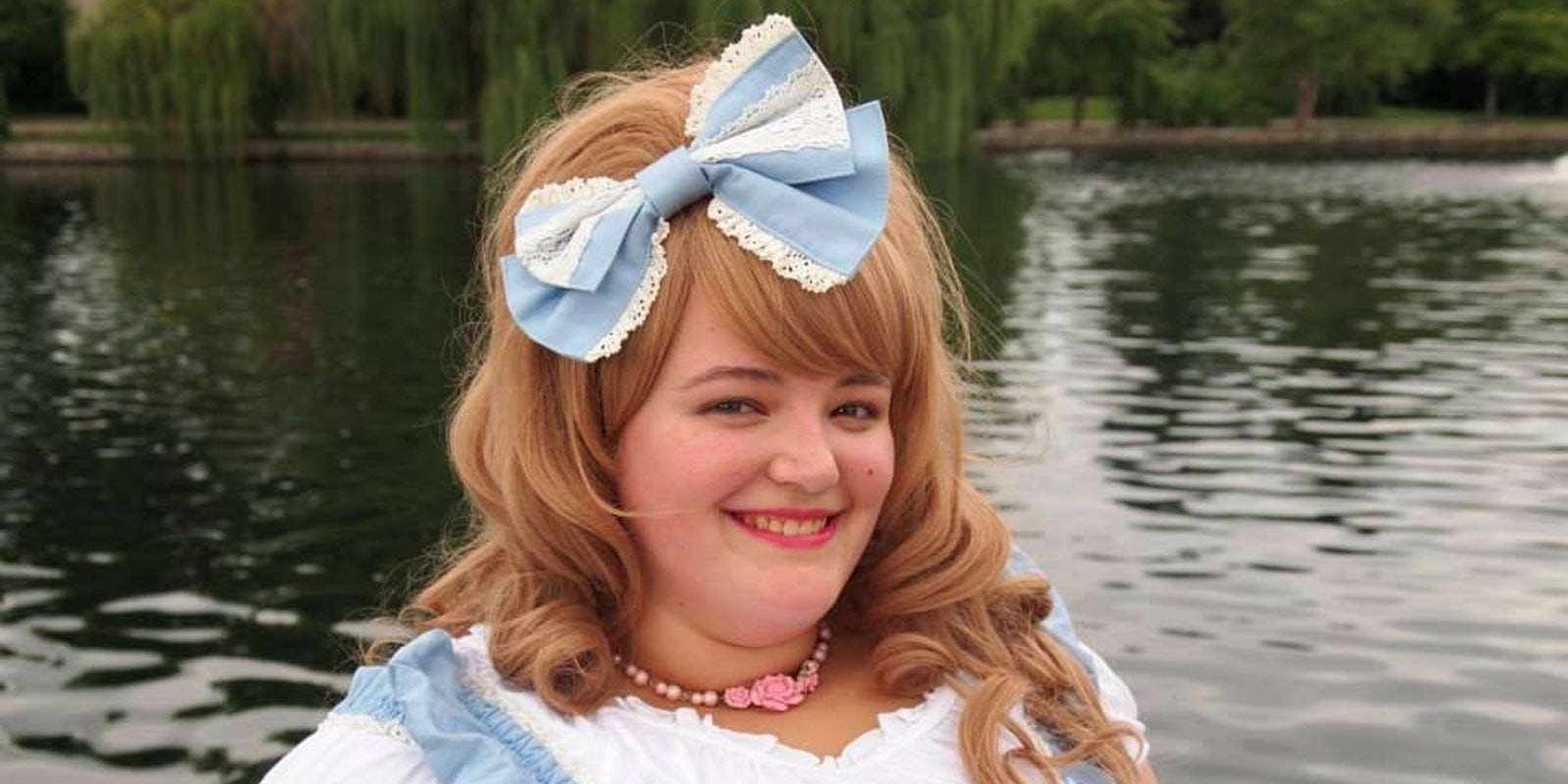On the fashionable streets of Japan, women and girls of all ages dress in mid-list couture dresses adorned with frills, lace, and intricately patterned fabric. The baby-doll dresses end in a sea of ruffles just above the knees, and giant bows pin their long hair into place.
The fashion is called “Lolita,” and while it was never intended to be just for Japanese schoolgirls, fans all over the world have embraced the trend—including some fans you might never have expected.
If you’ve ever heard the word “Lolita” used outside of a discussion of Russian literature, you probably still associate it—however Nabokov might protest the misconstruing of his novel—with tempting young schoolgirls who are trying to appear younger than they really are.
But leaving the not-so-legal implications aside, “Lolita”, which is slang for a sexually precocious pre-teen in Japan, has quietly burgeoned over the years into an enormous fashion industry, with brand-name dresses from designers like Angelic Pretty and Baby, the Stars Shine Bright routinely selling for hundreds of dollars.
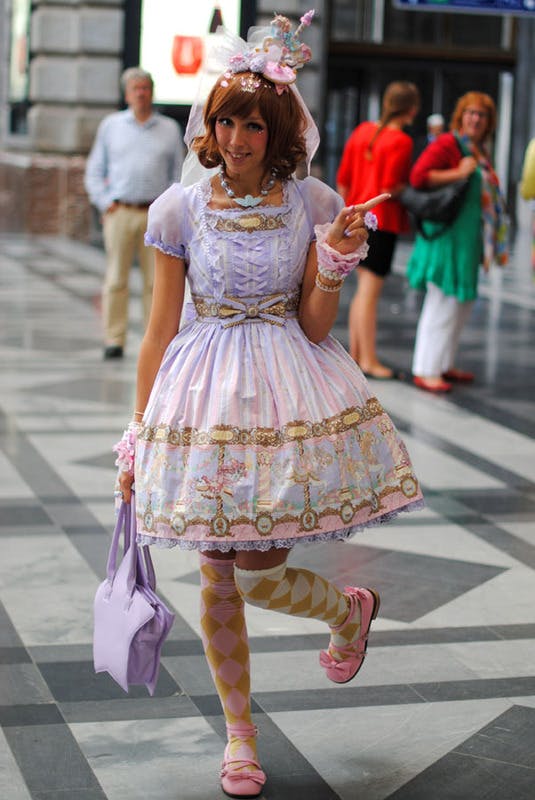
Photo via lunie-chan/LiveJournal
Today, Lolita fashion shows are commonplace at anime and other conventions around the world, and everyone has a separate story about how they ended up in the community.
“I kept seeing girls in these beautiful dresses,” Baltimore native Colleen, 27, tells me. She and her friend Jasmine Marie, 21, met through the Baltimore Lolita community on Meetup. At least once a month, the group gets together for typical “loli” events—tea parties, social meetups at someone’s house, trips to museums, or maybe just a movie.
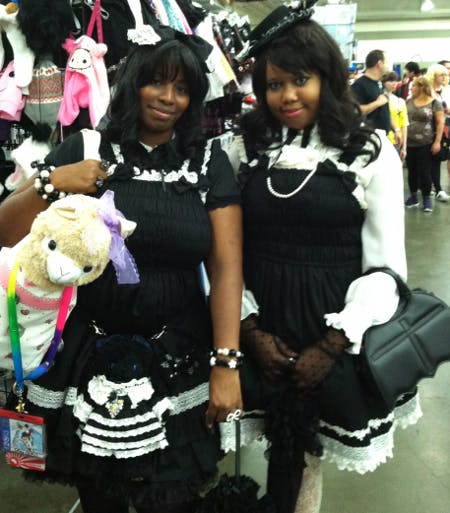
Photo by Aja Romano
Colleen says she had no idea Lolita fashion existed before she started noticing it each year when Otakon, the largest anime convention on the East Coast, came to downtown Baltimore. Jasmine Marie started wearing Lolita fashion after developing an interest in the Japanese rock movement visual kei, a punk/glam-inspired performance style characterized by a mix of black leather and elaborately adorned costumes. From visual kei, Jasmine says, it was a hop, skip, and a jump to the even more elaborate fashion of Lolita. Now, she spends between $200 to $300 per month on Loli dresses—and that’s after she scaled back.
She and Colleen are both wearing Baby, The Stars Shine Bright, a label which averages between $200 and $300 per dress. Colleen says she often gets hers second-hand to save money, then focuses on accessorizing. Jasmine, who blogs about her Lolita lifestyle and her frequent convention excursions at Black Rose Dream, has done a little modeling and says she wants to do more.
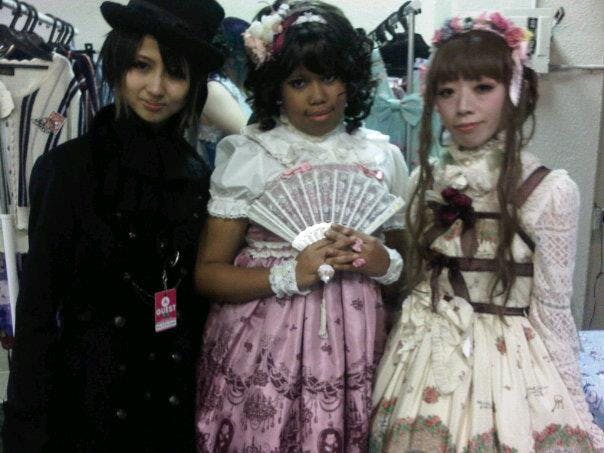
Jasmine Marie, posing with designers from Lolita brands Baby the Star Shines Bright and Alice and the Pirates
Photo via Black Rose Dream
The Aesthetic
Lolita fashion quietly originated in the 70’s with a few Japanese labels, but it wasn’t til the 90’s that the fashion married urban street fashion and hit the streets of Shibuya, Tokyo’s fashion district. Bands like Princess Princess helped popularize the look—the floppy bows and intricately adorned fabrics in this video from 1996 still make up a huge part of the look today:
Lolita fashion, sometimes nicknamed “Loli,” has several distinct sub-fashions, as well as related but separate off-shoots which have formed similar but separate styles.
Classic Lolita. The “purest” version of the look, Classic Loli has fewer embellishments than Sweet Lolita and a little more color than its Gothic or Punk counterparts. It’s characterized by simple print dresses without a lot of adornments.
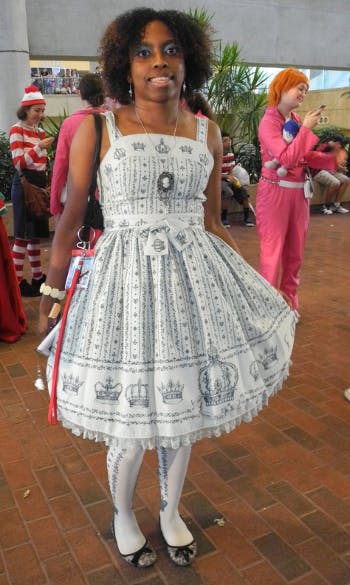
Classic Lolita at Otakon
Photo by Lauren Orsini
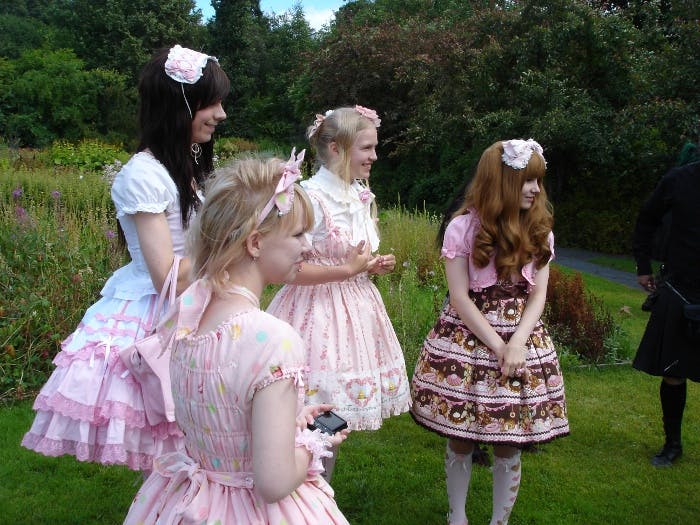
A Finnish Lolita meetup featuring the Classic loli look
Photo via finnishlolitas/Tumblr
Gothic Lolita. Heavily influenced by visual kei, Gothic Lolita most notably contains lots of black—but not always. Heavy boots paired with lots of lace, and dress lines modeled after Rococo period fashions, are common features.
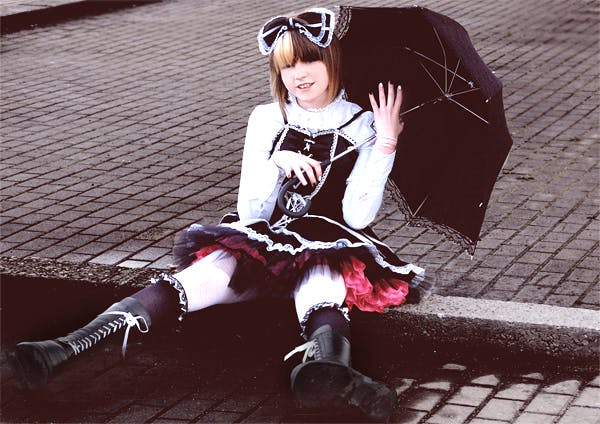
Photo by mistlel/deviantART
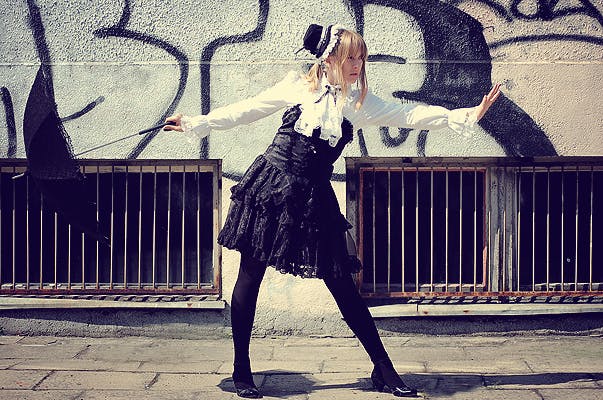
Photo by mistlel/deviantART
Sweet Lolita. Like Gothic Lolita, Sweet Lolita has more frills and lace than Classic Lolita, but it’s the total opposite in terms of aesthetic. Sweet Lolita uses lots of pink, parasols, and over-the-top embellishments to capture a true baby doll look. A hybrid version of Sweet and Gothic lolita is known as “Bittersweet Lolita.”
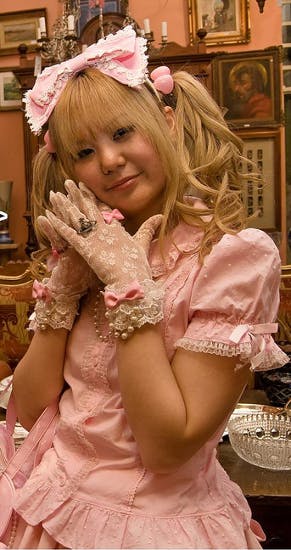
Photo via Tocoton Alice Webstore/Flickr
Punk Lolita. Much like Gothic Lolita, this look contains rock-influenced elements.
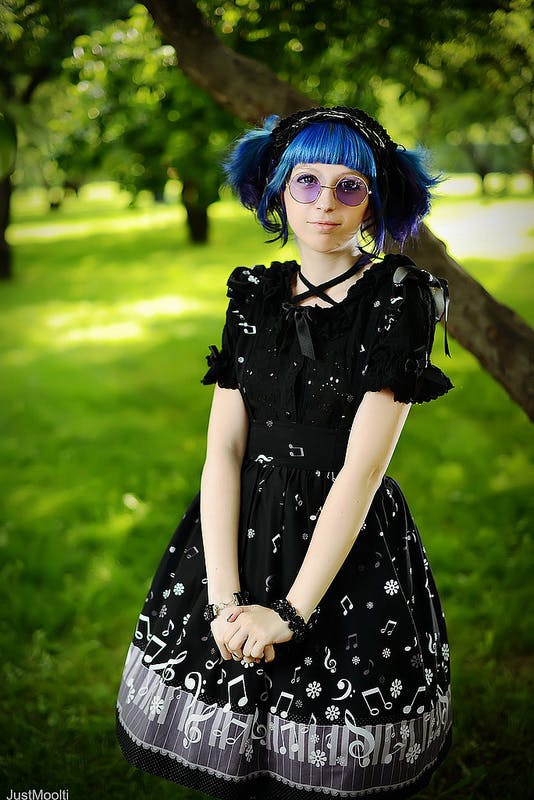
Photo by JustMoolti/deviantART via egl/LiveJournal
Mori. Not a subset of Lolita but a separate street fashion, Mori dresses tend to be longer, with a dedication to earth tones and a downplayed style.
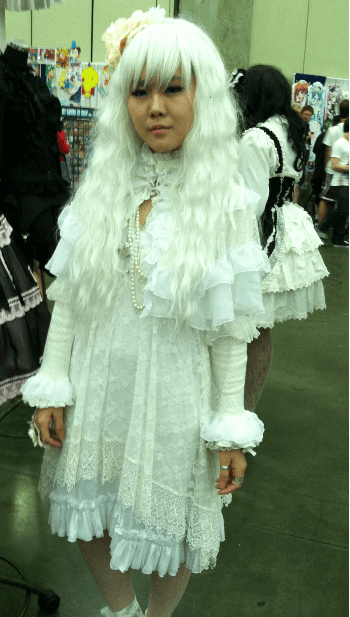
Photo by Aja Romano
Gyaru. A subset of ultra-feminine street fashion taken from the English word “gal,” Gyaru doesn’t look a lot like Lolita, but it borrows many of the same concepts, including exaggeratedly “feminine” characteristics like lots of eye makeup and a glamorous aesthetic.
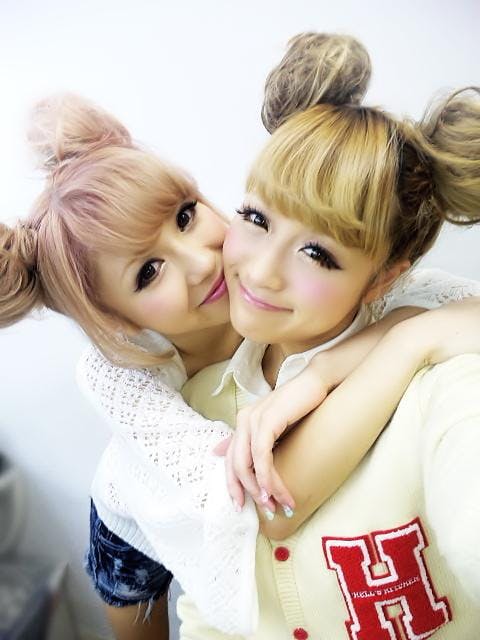
Hime. An overlapping offshoot of Gyaru and Lolita, Hime-gyaru offers wearers a modern-day, grown-up princess look, heavily based on Rococo period fashions.
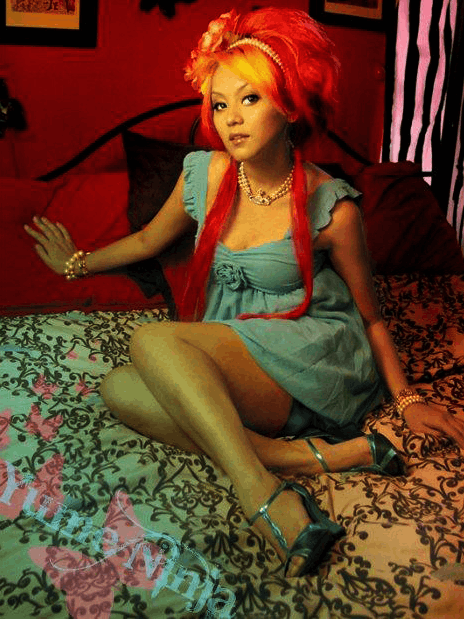
Photo by Mel Nerell via soullessyumeiru/deviantART
Is it steampunk?
Like steampunk, Lolita is heavily influenced by European and Victorian aesthetics, and it can be very difficult to tell the two apart. In addition to the fact that steampunk subculture has a literary and sci-fi/fantasy tie-in, here’s a quick checklist of things that set steampunk apart:
- Browns and earth tones. Steampunk uses lots of brown, gold, beige, and ecru as well as black and white.
- Longer skirt with a heavy slip. Most lolita dresses end around the knees, but Victorian-based steampunk dresses generally cover the ankles.
- Corsets: most steampunk dresses will feature ribbed bustiers or corsets or other type of fitted top. Look for bustles on the back of the dresses, too.
- Leather: Steampunk fashion makes heavy use of leather, while Lolita fashion sticks to soft fabrics.
- Trinkets, not jewelry: Steampunk embellishments feature lots of brass, clockwork parts, goggles, and mechanical whatnots. Lolita tends to stick with period or costume jewelry.
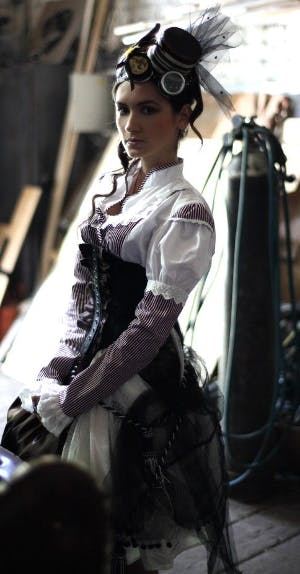
Photo via Steampunk Tendencies
Making your life just that much harder, there’s also Steampunk Lolita, which often consists of taking existing Lolita prints and adorning them in steampunk style. The print pictured below comes from Alice and the Pirates, a steampunk-flavored sub-brand of Baby the Star Shines Bright:

Photo via champagnesweetslifestyle/Tumblr
Lolita is for Everyone
When I ask Jasmine Marie and Colleen why they love Loli fashion so much, they respond almost simultaneously: “It makes you feel beautiful.”
This seems to be a common refrain throughout the Lolita community, and it’s one of the first things Lolitas tell me whenever I ask why they’ve stuck with a hobby that can easily run several thousand dollars yearly.
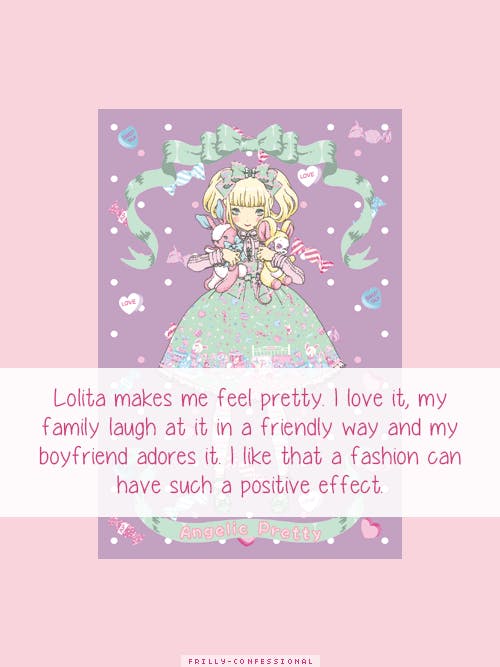
Photo via frilly-confessional
Despite the fact that Lolita is an uber-feminized style that harkens back to a European patriarchal tradition, it seems to be almost so hyper-feminine that wearing Loli fashion transcends its roots and becomes a form of rebellion instead. At conventions, Lolitas proudly show their stockings and lace whether they’re sixteen or sixty, male or female.
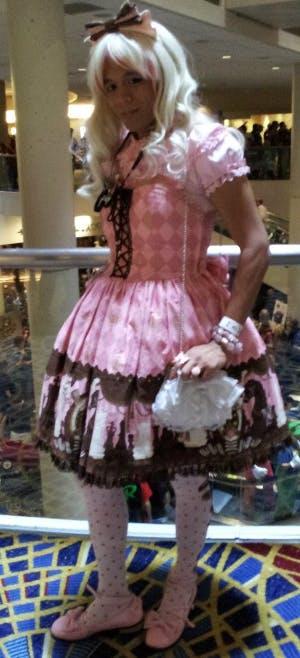
Photo via jchiong/Blogspot
You might think that men dressing as Lolitas wouldn’t be a popular trend, but you’d be wrong. They’re called “brolitas,” and Lolita fashion has made a space for them too.
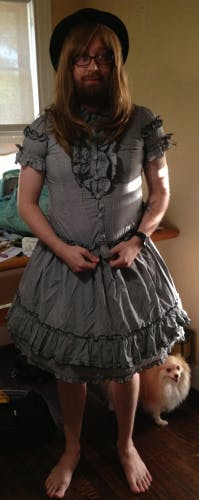
Brolita wearing the Metamorphose label
Photo via grimy13/Tumblr
Some brolitas dress up in order to support their Lolita-wearing partners. Others fully embrace the fashion and the community.
“I’m really thankful to the friends I made in my lolita community for helping me through those times,” writes brolita Bitmilky on Tumblr about his first nervous meetups with the Lolita community. “I always have so much fun when I’m with them.”
At Dragon Con, a girl in an Alice Blue hime dress agrees. Her name is Katie, and she got into Japanese street fashion after getting involved in a local para-para dance club in Nashville. Para-Para is heavily linked to gyaru fashion, and after trying it out, she was hooked.
“Before Lolita,” she tells me, “I was someone who didn’t have great self-esteem.” When she got involved in gyaru fashion in 2007, all that changed:
It made me realize that I could be whoever I wanted to be, and that I didn’t need to worry about whether people thought I was pretty. It makes me feel pretty and I do it because it makes me happy.
Like the Baltimore Lolitas, Katie’s Nashville meetup group typically does tea parties, balls, and other events. “It’s about the community and doing things with my friends,” she says.
Because Katie wears a larger dress size than that of most Lolita fashions, she tells me that she can actually save money because the dresses she buys aren’t as widely worn. The dress she’s wearing is off the rack, but it’s about $200 cheaper than its smaller counterparts from the same brand.
For women of size like Katie, African-American women like Colleen and Jasmine Marie, and genderqueer and other men like Bitmilky, a fashion that might be seen as restrictive, uncomfortable to wear, and gender-normative has actually become a liberating hobby. Perhaps that’s why Katie handwaves questions of cultural appropriation.
“There are people who have strict standards about what the community should be,” she says. “But most people are like, ‘if you like it, wear it.’ It’s a very international community.”
It’s also an unprecedented one. The Lolita trend is not one that everyone understands: Witness one lolita’s anguished story of how she spent months saving the money to buy her first Lolita dress, only to discover her mother had taken it out of her closet and given it to her ten-year-old niece because she didn’t consider it age-appropriate.
But increasingly, Lolita fashion seems to be for all ages and for all comers. As Bitmilky put it:
I know that for some people, it’s very hard to imagine being able to do the things they want to do, act they way they want to, or dress they way they want to. I hope that one day, you’ll find the courage to just give it a shot! That’s how I’m here today, and I know that you can do it too! <3
Photo via Facebook
